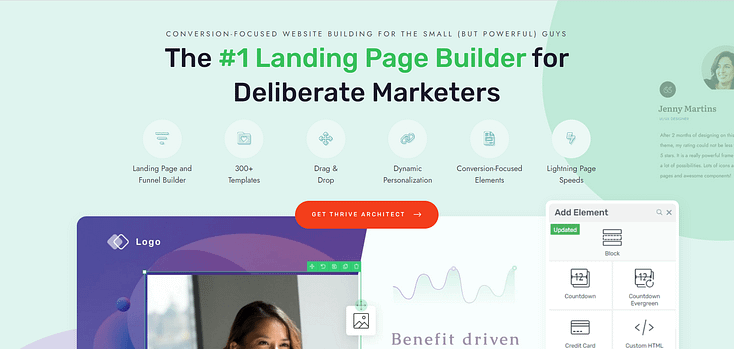Are you searching for the key elements of a successful sales page? Eager to learn how to create landing pages that not only capture attention but also drives conversions like a pro?
You're in the right place.
Creating a sales page isn’t just about flashy designs or catchy slogans; it’s about piecing together key elements that resonate with your audience and push them to act.
A well-structured sales page is a key component of your marketing arsenal, playing a major role in transforming interest into action.
If the thought of designing a sales page fills you with dread or angst, worry not. We've got you covered.
Whether you're a seasoned entrepreneur or just starting your journey, this guide is your roadmap to sales page success, helping you pitch your offer with ease and confidence.
Keep reading to learn what you need to build a sales page design that converts.
You Don’t Need to Be a Sales Expert to Create High-Converting Sales Pages
You might think crafting a successful sales page is strictly for the sales pros – those wizards of persuasion and masters of marketing.
But here's a little secret: you don’t need to be a sales expert to create a sales page that turns browsers into buyers.
We get it—the idea of building a page that not only captures attention but also convinces someone to take out their wallet can feel intimidating. As a bootstrap business owner, you're juggling enough hats as it is, and now you're supposed to be a magician too?
But, here's the good news: with the right elements in place, anyone can design a sales page that resonates with their audience and drives conversions. It's not about having a silver tongue or a marketing degree; it's about understanding what makes people tick and how to communicate your offer's value in a way that feels genuine and compelling.
What Are the Key Elements of a Winning Sales Page?
This section covers the most important page elements for your long and short-form sales pages.
Let’s dive in:
1. An Attention-Grabbing Hero Section
When your visitors land on your sales page, the first thing they’ll see is the hero section, and it's there to grab your attention.
Think of it as the welcoming handshake or the first few seconds of a conversation that draws you in. A winning hero section combines a powerful headline, high-quality visuals (or video), and a clear
call-to-action (CTA) that says, "Here's what we've got, and here's what you can do with it."
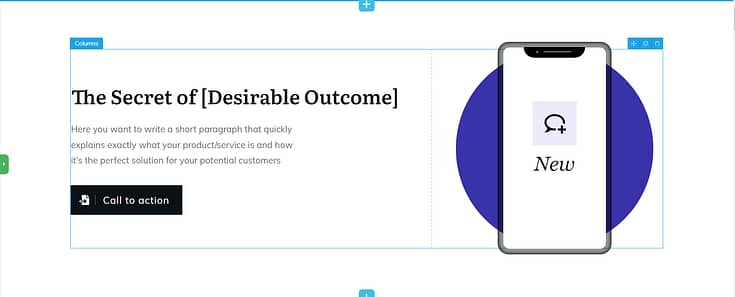
This section is your quick chance to communicate what's in it for your potential customers—the value proposition. It answers the "Why should I care?" and "What problem does this solve for me?" questions right off the bat. If this part of the page does its job well, your visitors more likely to stick around, dig deeper, and maybe even take action.
2. A Compelling Story
Right after that initial "hello" from the hero section, a sales page needs to keep the conversation going with a compelling story.
This is where your page really starts to speak to your prospects, heart to heart. Build a connection by addressing your target audience’s pain points to show them you understand their struggle.
With the right template, you can break your blocks of text up with engaging visual sections like the one below:

Be sure to use subheadings and bullet points to make your sales page copy easy to read.
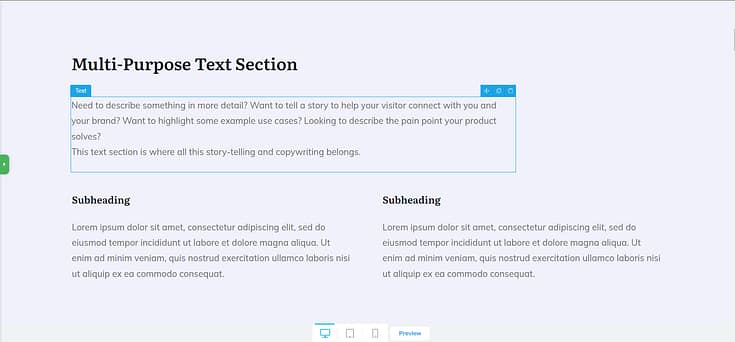
Once you’ve drawn out the pain points and exhibited empathy, it’s time to introduce the solution: your value proposition.
Don’t just list a bunch of features. This is where you turn your offer into the hero in your prospects’ story.
Highlight the benefits of your products and build a narrative that shows your potential customer not just what the product does, but how it can transform their day, work, or even their life.

This part of the story bridges the gap between "This is what we sell" and "This is how it fits perfectly into your world."
Why does this matter? Because stories stick. They're memorable. When a potential customer sees themselves in the story, their curiosity turns into focused interest.
Tip: If writing isn’t your forte, you should dive into these copywriting tips to craft great sales page copy.
3. Testimonials to Back Up Your Claims
Next, it's time to add social proof to your page to build trust with your prospects.
Social proof can be written or video testimonials from happy customers, case studies, user reviews, etc.
Customer testimonials are the friendly crowd at a party, all eager to share their own tales about how your product worked wonders for them. It's like overhearing someone saying, "Oh, you're interested in this? Let me tell you how it changed things for me!"
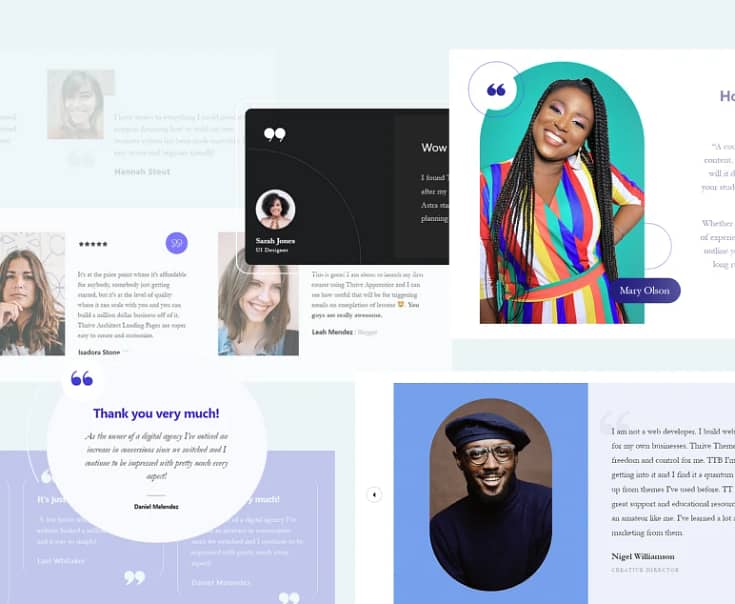
Testimonials are reassurance from those who've walked the path before your potential customers. They're the nods of approval and the pats on the back that say, "Yes, this really works, and here's proof."
4. Clear Calls to Action
By now, you've captivated your audience with your hero section, built a connection through the story, and offered reassurance in your testimonial sections.
They’re nodding along, thinking, "Yes, this is exactly what I need." But then, what?
This is where clear calls to action (CTAs) come into play, like signposts at a crossroads, showing them exactly where to go next.
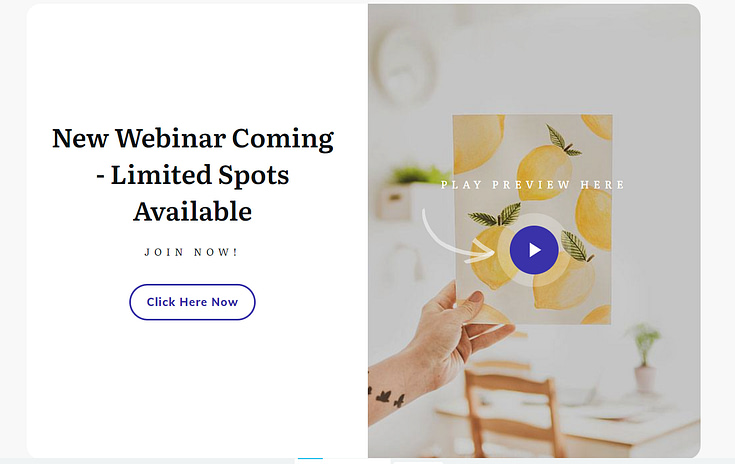
Example of a CTA Section Template in Thrive Architect
CTAs are the guide in this journey. You’ve taken your prospects this far, and your CTAs point to the door marked "Your Next Great Adventure."
Whether it's a CTA button that says "Buy Now," "Learn More," or "Sign Up," each CTA is a nudge, encouraging them to take the next step.
Be sure to include 2 to 3 clear calls to action on your page: one near the top, one in the middle of your page, and one towards the end.
This is especially essential for long-form sales pages.
5. Proactive FAQs Section
Before your prospects decide to take action, they might have a few questions.
Take a proactive step to answer these questions through a clearly placed FAQ section.
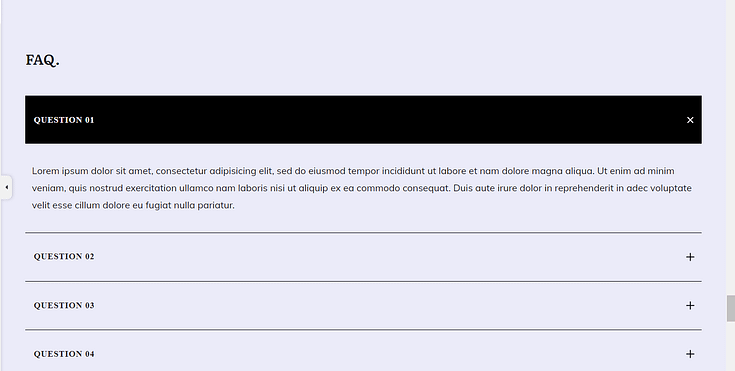
Uncertainty can be a major roadblock on the path to purchase. Your FAQ section is there to dismantle these roadblocks, one answer at a time, ensuring the road is clear and your visitors’ doubts are eased.
6. Pricing Table
Before your customer hits the buy button, they’re going to know how much it’s going to cost.
Cue the pricing table, ready to provide clear, concise information.
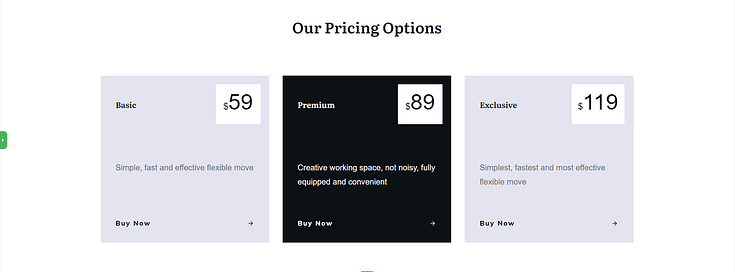
By laying out the options side by side, you give your prospects a chance to weigh their choices, compare features, and see exactly what fits within their budget and needs.
When it comes to parting with hard-earned money, surprises are the last thing your potential customers want. A well-organized pricing table removes the guesswork, answering the critical "Can I afford this?" and "Is this worth my investment?" questions in a straightforward, easy-to-digest format.
7. Scarcity Driving Elements
After going through your entire sales page, a group of potential customers might be on the brink of decision, and need one more nudge needed to tip them over the edge.
That's where scarcity-driving elements come in with a clear message: "It’s now or never."
Scarcity elements can be a big countdown timer, or the "Only 3 left in stock!" message that pushes your hesitant readers to take action and buy.

They create a sense of urgency, whispering (or sometimes, shouting) that if you don’t act soon, you might miss out on something great.
When we know something won’t last forever, we’re more likely to stop procrastinating and make a decision. It’s the push that gets us off the fence, transforming a "maybe later" into a "yes, now."
Bonus Tips to Create a Solid, Successful Sales Page
So, you've built a great sales page, weaving together elements to grab your reader’s attention and all the right nudges towards making a purchase. But before you hit “Publish” there are a few bonus tips to fine-tune it into a solid, unstoppable sales machine:
1. Make Your Pages Mobile-Friendly: Your audience very likely to visit your sales page from their mobile devices. Making your webpages mobile-friendly significantly boosts the chances of landing more sales — since your sales letter will be more accessible. Test your pages on multiple devices before the release day.

Mobile editing in Thrive Architect
2. A/B Test Your Sales Pages to Boost Conversion Rates: A/B testing your sales pages helps you see what resonates with them most. By comparing different versions of your page, you discover exactly what makes your visitors say, "Yes, I want this." It’s a methodical way to lift the curtain on what works best, refining your page based on real data rather than guesswork.
3. Have an Analytics Tool for Better Optimization: You wouldn’t go on a hike without a map, would you? Similarly, running a sales page without a reliable analytics tool is like navigating in the dark. Integrating an analytics tool allows you to turn on the lights and gather insights into how visitors interact with your page.
Together, these bonus tips are the final touches that transform a good sales page into an effective sales page.
Next Steps: Build the Rest of Your Funnel
A sales page is only one part of the rest of your sales funnel.
Once you've captivated your audience with a stellar sales page, it's time to think about the entire journey your customers will take.
Building out the rest of your sales funnel is about creating a seamless flow that guides potential customers through each stage of their buying journey, from initial awareness to final purchase and beyond.
Here are four free tutorials to help you create a profitable funnel that turns visitors into frequent customers who love your business:
And Finally…the Secret Weapon to Consistently Creating Perfect Sales Pages that Convert
Crafting a successful sales page doesn’t have to feel like trying to solve a puzzle with missing pieces. With the right tools, you can turn sales page creation into a straightforward, repeatable process.
High-converting content in rapid time!
And with a page builder like Thrive Architect, you can achieve exactly that.
Why Thrive Architect is Your Sales Page Superhero
Drag-and-Drop Simplicity: Picture yourself creating a sales page with the ease of moving each piece around until everything fits just right. That's the drag-and-drop interface of Thrive Architect. It’s designed for real people, not just tech experts.. You can literally see your page come to life as you add, move, and edit elements with a simple click and drag.
Templates Galore, Customized by You: Jumpstart your design process with professionally designed landing page templates that are anything but cookie-cutter. Each one waiting for your personal touch, allowing your brand’s personality to shine through.
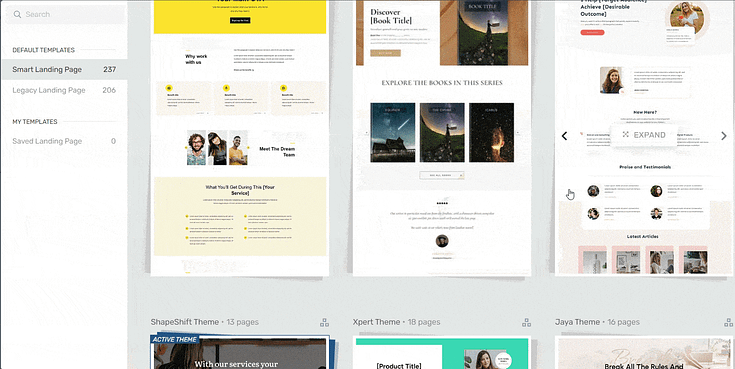
Landing page template sets in Thrive Architect
- Designed to Convert: Every element you add with Thrive Architect speaks the language of conversion. From compelling call-to-action buttons to engaging testimonial sections, it’s like having a marketing expert right there with you, guiding your design choices to ensure they’re primed for your audience's clicks.
- Plays Well with Others: Have favorite marketing tools you’re not ready to part with? Thrive Architect integrates seamlessly with a wide range of tools and platforms, from email marketing to social media.
- Looks Great on Any Device: A sales page template that looks fabulous on desktop but falls apart on mobile just doesn’t cut it. Thrive Architect ensures your page automatically adjusts to look its best on any device, so everyone has a front-row seat to your offer, no matter how they browse.
- What You See Is What You Get: With real-time editing, what you see is literally what you get. There’s no guessing how your page will look once it’s live. Each change you make is instantly visible, allowing you to tweak and perfect your page on the fly.

Thrive Architect Editor
In the end, creating a sales page with Thrive Architect feels less like completing an overwhelming and more like bringing your vision to life with a few clicks and drags.
And you can get started immediately.


